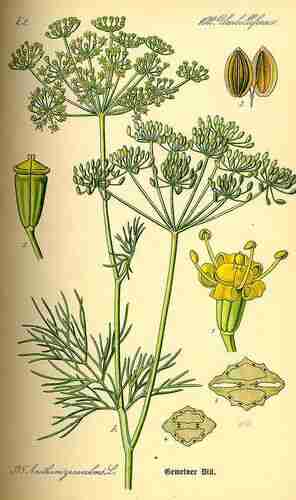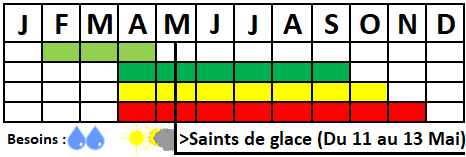! Nouveau site ici !
Vita > Plantae > Magnoliophyta > Magnoliopsida > Apiales > Apiaceae > Anethum






| Taux d'humidité | Énergie (kj) | Énergie (kcal) | Protéines (g) |
| 7.7 | 1276 | 305 | 16.0 |
| Pro- vitamines A (µg) |
Vitamines C (mg) | Fer (mg) | Zinc (mg) |
| 5 | 21.0 | 16.3 | 5.2 |

